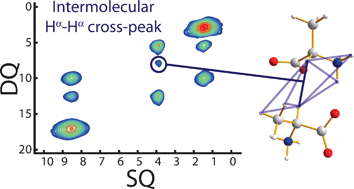1H and 19F ultra-fast MAS double-quantum single-quantum NMR correlation experiments using three-spin terms of the dipolar homonuclear Hamiltonian†‡
Abstract
Measuring internuclear distances through dipolar interaction is a major challenge for solid-state


 Please wait while we load your content...
Please wait while we load your content...